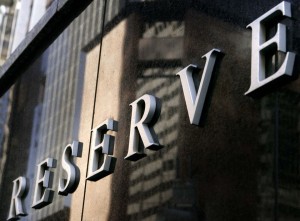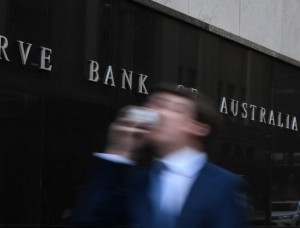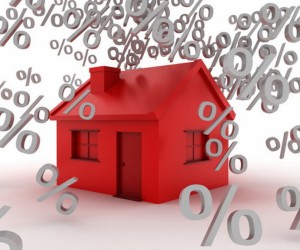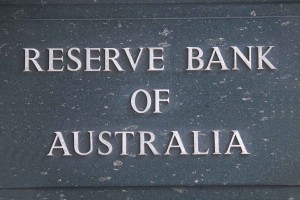The Reserve Bank of Australia has kept rates on hold at 1.5%.
The decision to leave the cash rate on hold today came as no surprise to those following our economy.
To better understand the decision, here’s some interesting expert commentary:
Martin Lakos ( Macquarie) comment:
This month the RBA maintained its stance and kept the official cash rate on hold at 1.5% for the 32nd month. 
The cooling of the housing market and the possibility of further price weakness is likely to be impacting household spending.
As yet there is no sign of credit growth picking up, and if the improving jobs market reverses, these issues will present as possible risks, and are likely to be reasons the RBA has now shifted to a more neutral bias.
Macquarie maintains its view that, on balance, the RBA will keep Australian interest rates stable until well in to 2020.
Source: Macquarie
Comments from Tim Lawless:
Although the cash rate remains unchanged since August 2016, there is a growing possibility that rates could fall later this year. 
The strong labour market report for January was likely a key factor in keeping rates on hold, however in balance, wages have grown at a consistently low rate growth and inflation remains stubbornly below the target range.
The sharp slowdown in residential construction activity and relatively benign retail trade figures may be hinting that weak housing market conditions are already spilling over to the broader economy.
No doubt the RBA are tracking housing market conditions very closely, watching for any further deterioration that might signal a dent to consumer spirits, resulting in less spending, more saving and a further pull back in residential construction activity.
CoreLogic reported another broad based decline in dwelling values in February, down 0.7% nationally, however the good news was that the rate of decline has eased over the past two months and housing affordability is showing a consistent improvement across most housing markets.
The performance of the housing sector over coming months should provide some clues about future monetary policy decisions.
A further deterioration in the pace or geographic scope of declines could tip the balance in favour of a rate cut later this year as the RBA becomes wary of the wealth effect moving into reverse
Source: Corlelogic
Comments from the RBA:
At its meeting today, the Board decided to leave the cash rate unchanged at 1.50 per cent.
The global economy grew above trend in 2018, although it slowed in the second half of the year.
The slower pace of growth has continued into 2019. 
The outlook for the global economy remains reasonable, although downside risks have increased.
The trade tensions remain a source of uncertainty.
In China, the authorities have taken further steps to ease financing conditions, partly in response to slower growth in the economy.
Globally, headline inflation rates have moved lower following the earlier decline in oil prices, although core inflation has picked up in a number of economies.
In most advanced economies, unemployment rates are low and wages growth has picked up.
Overall, global financial conditions remain accommodative.
They have eased recently after tightening around the turn of year.
Long-term bond yields have declined, consistent with the subdued outlook for inflation and lower expectations for future policy rates in a number of advanced economies.
Also, equity markets have risen, supported by growth in corporate earnings.
In Australia, short-term bank funding costs have moderated, although they remain a little higher than a few years ago.
The Australian dollar has remained within the narrow range of recent times. 
While the terms of trade have increased over the past couple of years, they are expected to decline over time.
The Australian labour market remains strong.
There has been a significant increase in employment and the unemployment rate is at 5 per cent.
A further decline in the unemployment rate to 4¾ per cent is expected over the next couple of years.
The vacancy rate is high and there are reports of skills shortages in some areas.
The stronger labour market has led to some pick-up in wages growth, which is a welcome development.
The improvement in the labour market should see some further lift in wages growth over time, although this is still expected to be a gradual process.
Other indicators suggest growth in the Australian economy slowed over the second half of 2018.
The central scenario is still for the Australian economy to grow by around 3 per cent this year.
The growth outlook is being supported by rising business investment, higher levels of spending on public infrastructure and increased employment. 
The main domestic uncertainty continues to be the strength of household consumption in the context of weak growth in household income and falling housing prices in some cities.
A pick-up in growth in household income is nonetheless expected to support household spending over the next year.
The adjustment in the Sydney and Melbourne housing markets is continuing, after the earlier large run-up in prices.
Conditions remain soft in both markets and rent inflation remains low.
Credit conditions for some borrowers have tightened a little further over the past year or so.
At the same time, the demand for credit by investors in the housing market has slowed noticeably as the dynamics of the housing market have changed.
Growth in credit extended to owner-occupiers has eased further.
Mortgage rates remain low and there is strong competition for borrowers of high credit quality.
Inflation remains low and stable.
Underlying inflation is expected to pick up over the next couple of years, with the pick-up likely to be gradual and to take a little longer than earlier expected.
The central scenario is for underlying inflation to be 2 per cent this year and 2¼ per cent in 2020.
Headline inflation is expected to decline in the near term because of lower petrol prices.
The low level of interest rates is continuing to support the Australian economy.
Further progress in reducing unemployment and having inflation return to target is expected, although this progress is likely to be gradual.
Taking account of the available information, the Board judged that holding the stance of monetary policy unchanged at this meeting would be consistent with sustainable growth in the economy and achieving the inflation target over time.
Source: www.rba.gov.au
Comments from the Finder.com.au RBA Survey:
In the survey, some experts (9/17) forecasted the cash rate would drop to 1.00% before the year is out. 
Graham Cooke, insights manager at Finder, said August and November were the most popular months for a forecasted cut.
That said, every remaining month receives a cut prediction from at least one survey participant.
Here’s what our experts had to say:
Michael Yardney, Metropole Property Strategists: “The RBA has acknowledged that our economy is weaker and the likelihood that the next movement in rates is down. However, it is hoping for employment growth to buoy our economy and it is likely to wait a month or two and see how our property markets are faring before acting.”
Nicholas Frappell, ABC Bullion: “Chances of a cut have grown, but the domestic outlook remains reasonably good employment-wise and so far consumer spending remains okay despite sinking property prices on the east coast.”
Shane Oliver, AMP Capital: “Things aren’t yet weak enough to push the RBA to cut but they aren’t strong enough to push it to hike either.”
Alison Booth, ANU: “The fundamentals do not warrant any rate changes.”
John Hewson, ANU: “Insufficient evidence yet of a slowing economy.”
Malcolm Wood, Baillieu: “Labour market still robust; inflation below target.” 
Tim Moore, CUA: “On the balance of the economic data in Australia, the RBA have clearly communicated that the risks are balanced therefore the trajectory of the cash rate from here will depend on how both downside and upside risks play out with the key hurdle to a rate cut being employment and inflation. I expect neither cash rate move in the near term.”
Trent Wiltshire, Domain: “The RBA has stated the outlook for the cash rate is more balanced, rather than the hiking bias seen throughout 2018. But the RBA is still keen to avoid cutting rates, so will keep the cash rate on hold.”
Debra Landgrebe, Gateway Bank: “This is a watching brief, as GDP growth is slower than expected, unemployment is expected to tick up, despite the January jobs report being stronger than expected. This means that quantitative easing may be required. GDP growth is feeling the effect of property prices falling and low wage growth, which is dampening consumer spending more than expected.”
Mark Brimble, Griffith Uni: “Bias is moving toward rate reduction, and while there is a case for this in my view, the RBA is likely to want to hold position for now.”
Peter Haller, Heritage Bank: “The RBA has clearly stated it is on hold for the time being.”
Tim Reardon, Housing Industry Association: “Insufficient data to conclude that the poor results from end 2018 will be long lived.”
Alex Joiner, IFM Investors: “The RBA emphasised that it does not think it will need to move on rates, in either direction, in the short term. I’d agree with this sentiment. While some indicators have softened, importantly the labour market has held up well and while this continues to be the case, the RBA has time to assess the remainder of the economy and wait for the better wages and inflation metrics it desires to emerge.” 
Michael Witts, ING: “Their recent comments suggest the outlook for rates is finely balanced.”
Peter Boehm, KVB Kunlun: “The overall direction of interest rates appears to be at a crossroads. For now, I expect rates to stay on hold but recent mixed economic data (in particular the slowing of the housing market) not to mention what’s happening internationally (political unrest, trade wars, strains on international relationships) is adding a fair degree of volatility to the economic and financial landscape, which may well last during the course of 2019. For this reason, the RBA may take a conservative approach to rate setting, erring on the side of caution. This caution may manifest itself in a rate drop, meaning, in part, the economy is not as solid as we would like. The next couple of months, leading up to the general election, will be telling.”
Leanne Pilkington, Laing+Simmons: “There’s somewhat of a stand-off in the housing market at the moment. The level of buyer interest is encouraging but reduced accessibility to finance is having a dampening impact on transactional activity. While this issue runs deeper than merely the cost of finance, a hold pattern remains the prudent course for the RBA in the current climate.”
Nicholas Gruen, Lateral Economics: “The bank will see no need to move.” 
Mathew Tiller, LJ Hooker: “Despite a deterioration in the outlook for the Australian and global economies, recent employment data shows that there are some economic bright spots. This means it remains too early for the RBA to shift rates just yet.”
John Caelli, ME Bank: “The Reserve Bank recently moved their interest rate outlook to neutral territory, so it is likely they will hold rates for the near future. With growth and inflation forecasts downgraded, the focus will be on the housing market and unemployment for signs of stress.”
Mark Crosby, Monash University: “RBA held off raising rates with house prices rising for three years. It would be staggering if they cut after 12 months of falls, given a generally stable economy.”
Jacqueline Dearle, Mortgage Choice: “I predict the RBA to hold the rate in March and beyond until it has a better handle on what’s really happening locally with consumers and because there are no major external drivers, such as the Fed, to shift. In February, the Fed left the key interest rate unchanged and said it would be patient in the face of a mounting set of risks, including slowing growth in China and Europe, Brexit, ongoing trade negotiations and the effects of the five-week US government shutdown.
Back in Australia, the RBA’s prediction of 3% economic growth this year (and 2.75% growth next year), may be too optimistic, say some economists. Softer growth numbers mean higher  unemployment, which would suggest a rate cut down the track. The RBA will be keeping a keen eye on the housing market, especially the key markets of Sydney and Melbourne. With the housing adjustment threatening to spill over into the wider economy, the (negative) wealth effect may increase consumer desire to save and curb consumer spending, which in turn impacts retail and the wider economy. As we have seen this month, there are a lot of moving parts with the Australian dollar, which is sensitive to global economic uncertainties. Looking ahead, we will ideally see credit flow to borrowers to support the housing market, an increase in residential construction, and property investors encouraged to get back into the market.”
unemployment, which would suggest a rate cut down the track. The RBA will be keeping a keen eye on the housing market, especially the key markets of Sydney and Melbourne. With the housing adjustment threatening to spill over into the wider economy, the (negative) wealth effect may increase consumer desire to save and curb consumer spending, which in turn impacts retail and the wider economy. As we have seen this month, there are a lot of moving parts with the Australian dollar, which is sensitive to global economic uncertainties. Looking ahead, we will ideally see credit flow to borrowers to support the housing market, an increase in residential construction, and property investors encouraged to get back into the market.”
Dr Andrew Wilson, My Housing Market: “Waiting for December quarter GDP data to be released March 6. If there is another weaker than expected result, the odds will narrow for a pre-Budget, pre Federal Election cut in April or May. Although recent wage data was reasonable (not good, not bad), RBA has conditioned the market to now expect a long-needed cut. This cut will attempt to revive consumption, which is now likely to also be impacted by continuing weaker housing markets.”
Alan Oster, NAB: “RBA still watching the economy, the consumer and wages.”
Andrew Reeve-Parker, NW Advice Pty Limited: “Sufficient economic activity is balancing housing market concerns.”
Jonathan Chancellor, Property Observer: “Holding is the bank’s inclination.”
Noel Whittaker, QUT: “There is no way they will raise them and a drop would be premature.” 
Nerida Conisbee, REA Group: “Although the case is building for the next move to be a cut, I think that on balance, the data coming out is still too mixed. Unemployment is still very low even though we are still not seeing this flow through to consumer sentiment.”
Janu Chan, St.George Bank: “The RBA has recently shifted toward a more neutral stance, and acknowledged that downside risks have increased. It however, is maintaining its central view that the unemployment rate will gradually fall. While the debate has shifted away from the next move being a hike, the RBA doesn’t appear to be ready to cut rates either. ”
Clement Allan Tisdell, The University of Queensland: “Comments of the Governor of the RBA lead me to believe the cash rate will be held.”
Richard Holden, UNSW: “[The RBA is] waiting for new inflation numbers before they make a move.”
Source: www.finder.com.au
from Property UpdateProperty Update https://propertyupdate.com.au/experts-comment-on-the-march-rba-interest-rate-decision-video/

No comments:
Post a Comment